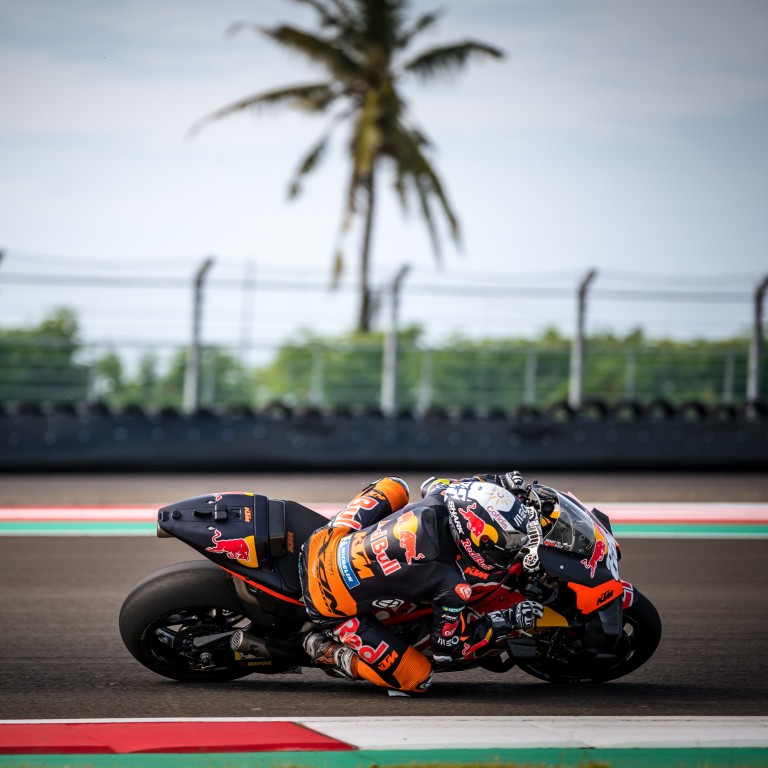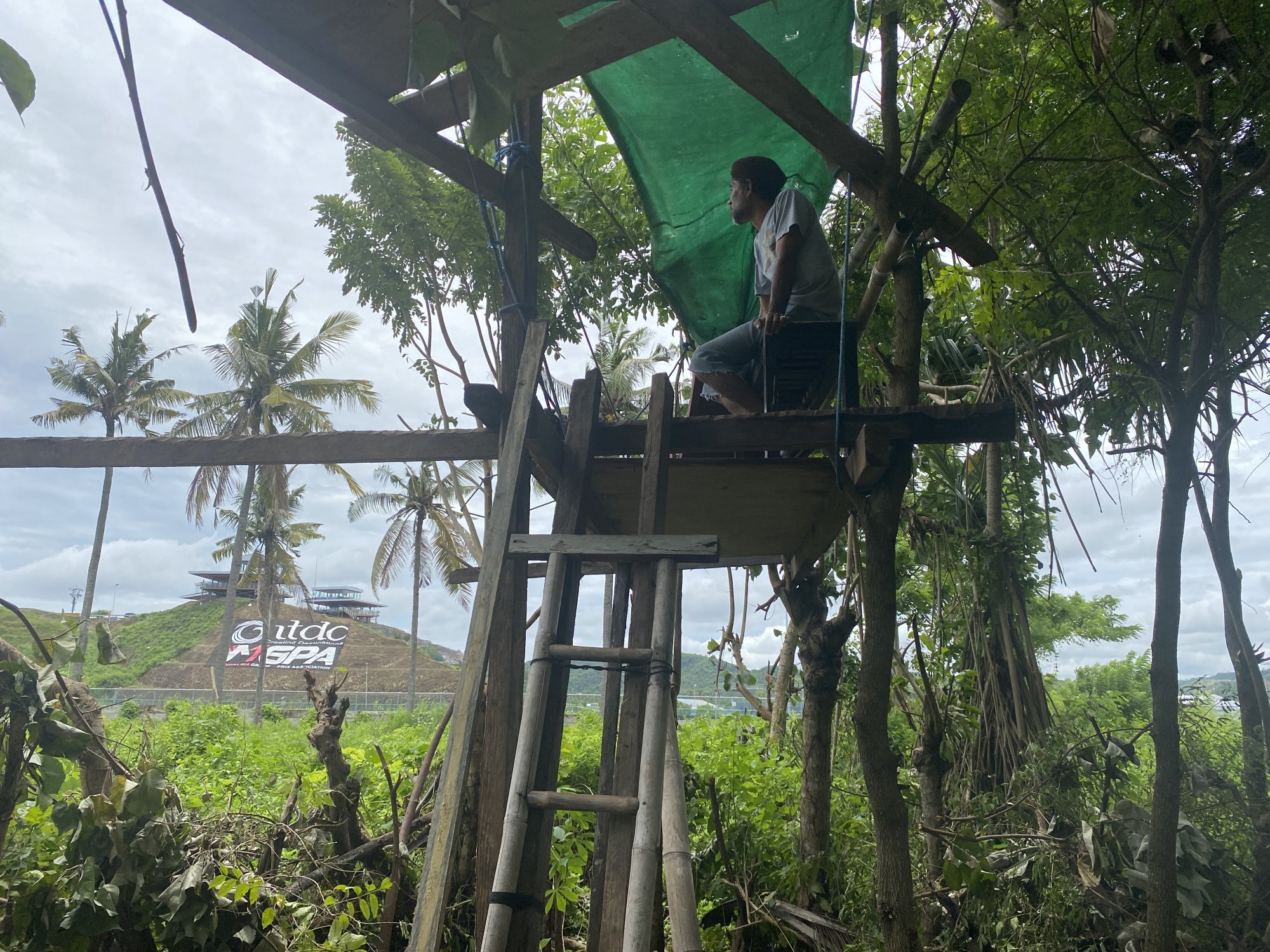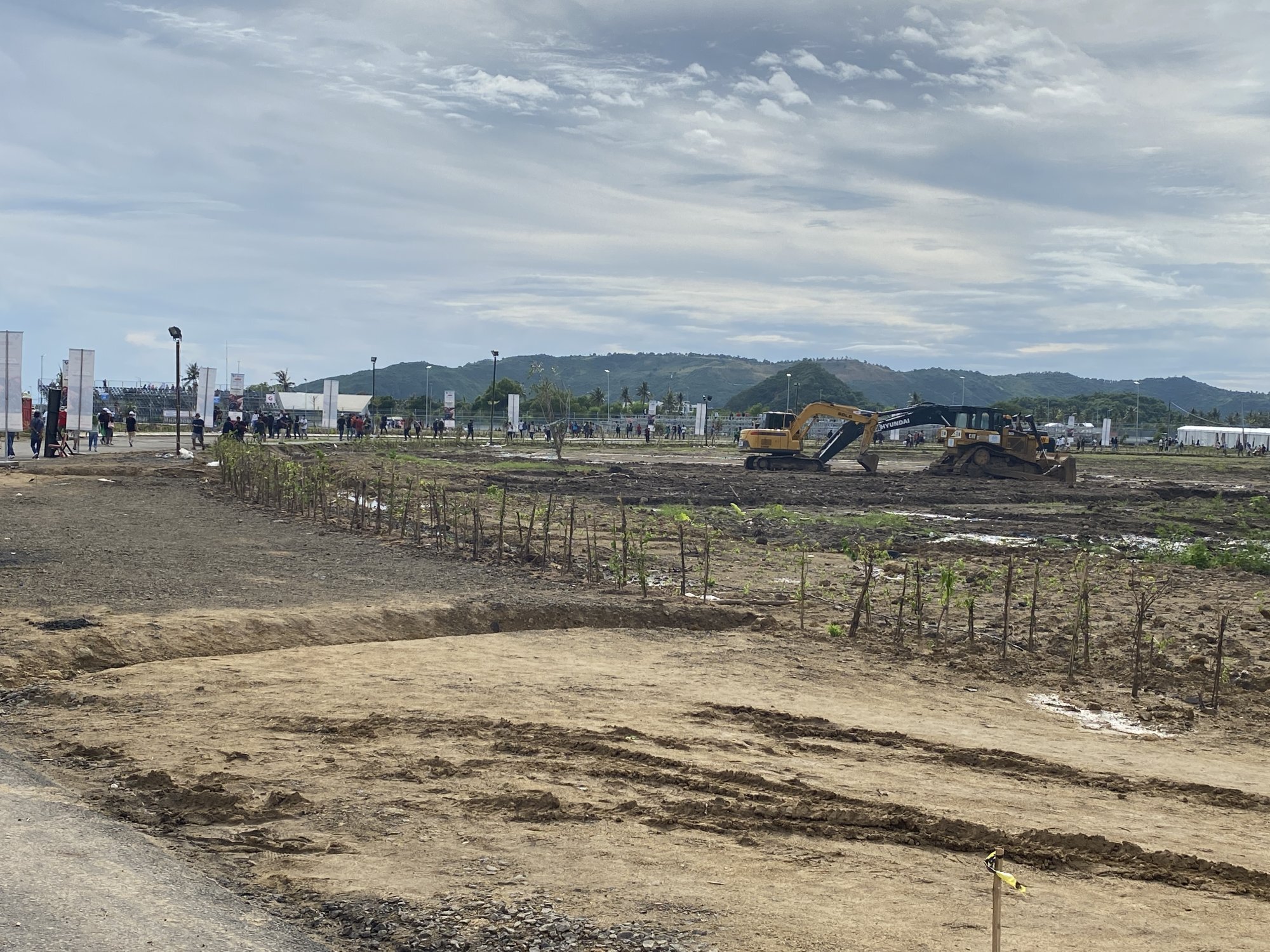
Indonesian MotoGP may be over, but land conflicts over the US$3 billion AIIB-backed Mandalika tourism project are revving up
- Many villagers say they have lost land to the special economic zone that in addition to the racing circuit is to host hotels, villas, a theme-park and a golf course
- Land conflicts surrounding the project were highlighted by the UN last year. Despite the success of the motorcycle grand prix, many disputes remain unsettled
The most expensive seat for the Indonesian MotoGP tournament in Lombok was not one of the 15 million rupiah (US$1,046) VIP Premier Class tickets being sold by the organiser; it was a 3.5 metre tall rickety platform built by a local woodworker.
It took Sibawai only one day to build the makeshift seating and cost him next to nothing in materials. But it has taken him at least 30 years, and counting, to fight for the land the platform is built upon.
Sibawai claims ownership of six hectares of land in an area of Lombok the government has designated as the Mandalika Special Economic Zone. His humble house and sprawling farmland of coconut, corn, and cassava fields now sit next to the walls of the Mandalika International Street Circuit, the site of last week’s MotoGP race.

He says some of his land, about 1.2 hectares, was cleared and used to build the circuit – approximately where “bend number 10” of the track is now. Losing that bit of land cost him coconut trees – he has 80 now, down from 300 – and he says he has never been compensated for the loss.
His land falls within the more than 1,035 hectares dedicated to the Mandalika SEZ, a US$3 billion mega tourism project, partly funded by the Asian Infrastructure Investment Bank, on the southern coast of Lombok.
Upon completion, the project will be home not only to the world-class circuit, but also high-end resorts, hotels and villas, a theme-park and a golf course.
Once the construction of these amenities starts, the father of six will probably have to leave his house and relocate as many other villagers have done already.
We took the money, we didn’t have another choice
“I can’t imagine how much longer I have to live here. My front yard is now unkempt because I always think about this and I don’t have time to do anything else. I wonder about my future, my children’s future. I am worried about them,” Sibawai, 53, told This Week in Asia amid the ear-deafening noise of motorbikes revving on the track during the qualification race on Saturday.
While he welcomes Indonesia’s overall success in organising the world’s top motorbike race on his doorstep, he urges Dorna, the MotoGP organiser, to “be more aware of the unfinished land conflicts surrounding the development [of the circuit].”
“This issue is what made us complain to the UN in the first place. We have been treated like a fool for longer than just one or two years,” he said.

‘Nothing changes’
Indonesia revs up Lombok tourism as MotoGP returns after 25 years
The AIIB provided a sovereign-backed loan to the tune of US$248.39 million from 2019 to 2023, according to the bank’s response to the UN report. That represented a large chunk of the project’s estimated total cost of US$316.5 million, with the rest of the funds provided by the Indonesian government and Indonesia Tourism Development Corporation (ITDC), which manages the complex. According to the UN, the complex has attracted “more than US$1 billion investment by private businesses” which includes the likes of Pullman, Paramount Resort and Club Med.
At the root of the problem is the allegation of land grabs by ITDC, which has for years claimed that it has the Land Mastery Rights of some 1,175 hectares in Mandalika. But not all of the land was acquired smoothly, as 135 hectares were claimed by the community of farmers and fishermen in the area, who had occupied the land for generations. Like many others in Indonesia, some villagers did not have proper documentation to prove their ownership, which puts them at disadvantage during land conflicts.

In response to This Week in Asia’s queries about steps taken by the bank following last year’s UN report, the bank’s spokesperson pointed to the AIIB’s response dated May 3, 2021. In it, the bank said that it “refutes the Joint Communication’s overall contention of lack of or deficient due diligence by AIIB in connection with its assessment of the project’s preparation or its monitoring of project implementation.”
The UN Special Rapporteur for extreme poverty and human rights did not immediately respond to This Week in Asia’s requests for comment on whether he maintained the same views about the human rights violation allegation in Mandalika a year after the report was published.
At the time of the response, AIIB said that it “has not, to date, found any evidence of coercion or direct use of force or intimidation relating to land acquisition and resettlement under the project itself.”
The bank, however, acknowledged that “more should have been done to better explain how this project will benefit the local community, how project-affected people are being compensated and how they will be provided livelihood and employment opportunities.”
How hippy haven Bali is getting ready to welcome back the tourist hordes
The UN experts also named French firm VINCI Construction Grands Projects as the project’s largest investor as it is “in charge of the Mandalika Circuit, hotels, a hospital, a water park, and other facilities.”
The company did not respond to This Week in Asia’s request for comment on the UN experts’ lack of due diligence allegation.
In its response in May last year, ITDC said that The Sasak Tribe Customary Council “also confirmed that there is no forced land grabbing, eviction, or forced relocation executed by the government authorities, ITDC, or police/security.” Sasak is the native tribe of Lombok island.
But Sibawai and a former villager who lived inside the racetrack told This Week in Asia they faced intimidation by the developers before and after the UN report was released in March last year.

Damar, a surfing teacher who also has only one name, owned a total of 45 hectares on two spots within the circuit. He said that hundreds of police came to his house on the first day of the Islamic holy month of Ramadan last year – April 12 – to “intimidate me to move out two days after we decided to accept the compensation money from ITDC that was consigned in the court.”
“They told me to vacate the land, which I think was an unethical thing to do. Couldn’t [the developer] just send one or two people, so they wouldn’t frighten the people there?” he said.
“With a heavy heart we [took the money], we didn’t have another choice. The most important thing is that we got paid for it, although the amount was not as much as we expected.”
For his land, he was paid 70 million rupiah (US$4,882) per are (100 square metres), even though the land in the prime tourism area could easily fetch up to 200 million rupiah (US$13,950) per are, the father of four said. He eventually vacated the land a few days after the police came, and moved to another village about 15 minutes drive from Lombok’s Kuta beach.

“When we first relocated, my children sometimes woke up at night, telling me to go home [to our house inside the circuit]. My heart really broke hearing it,” he said, adding that he still did not dare to visit the racetrack after he relocated.
In its response last year, ITDC said “the value of the lands was determined by professional appraisers as an independent party” and the appraisals “cover land, spaces, buildings, plants, and other valuable losses.”
Before they received compensation, villagers inside the racetrack stayed in their houses even after the fences were built around their village. In August last year, the villagers broke some parts of the fences as they “felt like they were being treated like dogs” since their mobility was limited, Damar said. The fences prevented fishermen in the village from easy access to the sea, hitting their livelihoods, he said.
He said nothing had changed for the villagers still living in the area outside the racetrack following the publication of the UN report last year. The developer might have thought it was more urgent to clear the land inside the racetrack for the MotoGP event, Damar said.

‘Fight till death’
Sibawai said the UN report had at least helped those living inside the racetrack as it had expedited the payment for their lands.
“The UN report means something to me, because I would never have dreamt that my case would be picked up [by an international organisation],” he said.
According to Sibawai, hundreds of police came to his land in January last year, when they stayed for a week “to intimidate him” to leave.
“I feel like a terrorist. My family is traumatised by it,” he said.
He said he was willing to vacate the land if the government or developer paid the “appropriate amount” for all six hectares. He is hoping to get paid 200 million rupiah per are, as the complex “will be dedicated to international events” such as the MotoGP and World Superbike championship race.
“I am not hell bent on getting paid for my land. What I ask is that [the developers] don’t use physical force to evict me and my family,” he said.

Damar and Sibawai also called for foreign investors in the Mandalika project to provide employment opportunities to the locals.
“It’s okay if we have to move but what are we going to get after this? Are we going to get the priority to work at the circuit or other [companies] or will we just get the compensation money and then, ‘bye bye’?” said Damar, who had to shut his surfing school during the pandemic.
While Damar’s fight might be over, Sibawai’s faces a long struggle yet to get his compensation.
“I was told by the [local government’s] task force to stay mum during the MotoGP, and that we would continue the discussion after the event,” he said.
“I will fight till my death for my land. It is for the future of my children, my family, and my relatives.”

